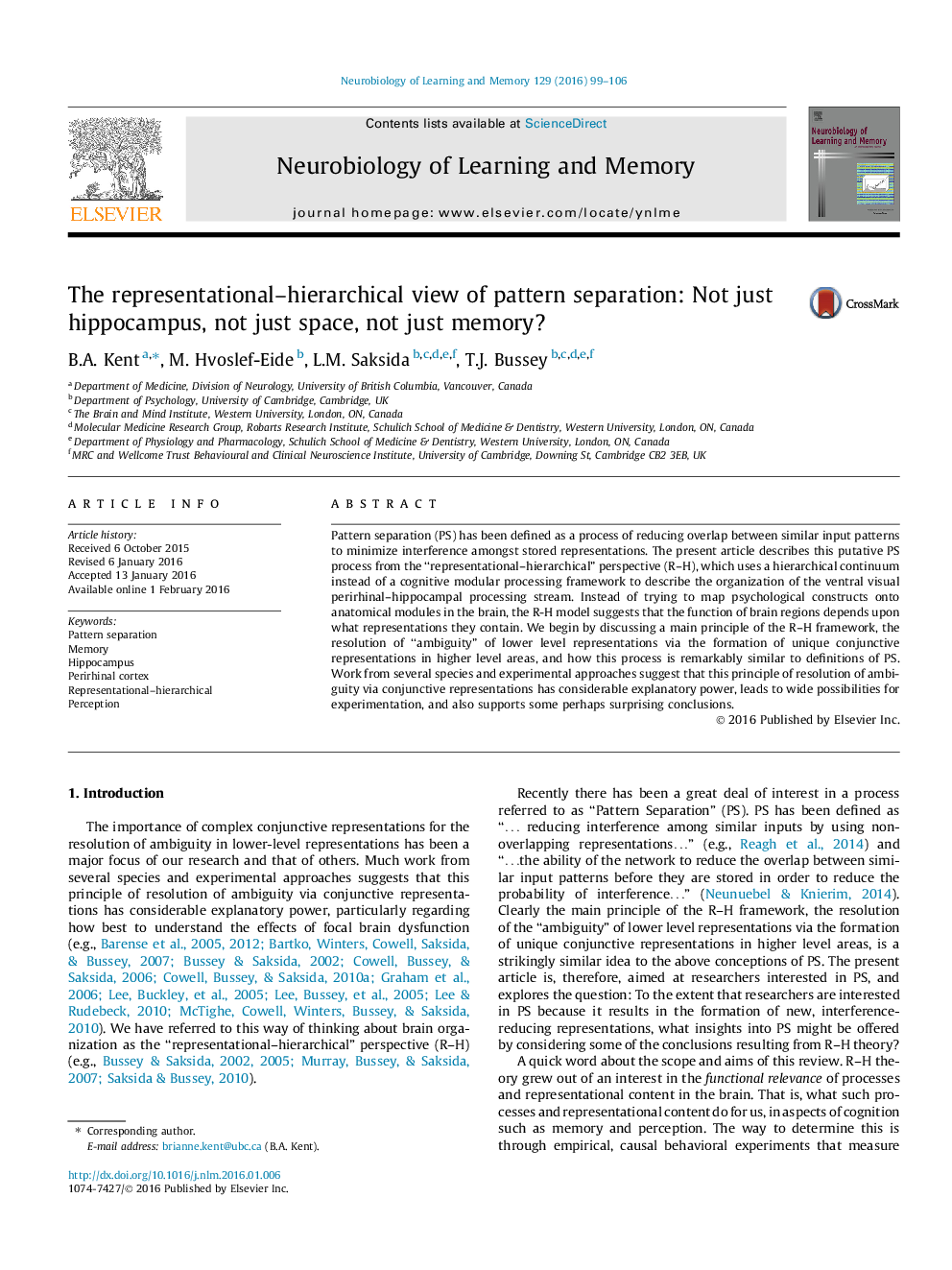| Article ID | Journal | Published Year | Pages | File Type |
|---|---|---|---|---|
| 936509 | Neurobiology of Learning and Memory | 2016 | 8 Pages |
•PS may be fundamental to many aspects of cognition including perception.•PS might be thought to happen in many regions, not just the hippocampus.•The DG is unlikely to be a truly domain-general pattern separator.•PS may have much wider explanatory power than previously suspected.
Pattern separation (PS) has been defined as a process of reducing overlap between similar input patterns to minimize interference amongst stored representations. The present article describes this putative PS process from the “representational–hierarchical” perspective (R–H), which uses a hierarchical continuum instead of a cognitive modular processing framework to describe the organization of the ventral visual perirhinal–hippocampal processing stream. Instead of trying to map psychological constructs onto anatomical modules in the brain, the R-H model suggests that the function of brain regions depends upon what representations they contain. We begin by discussing a main principle of the R–H framework, the resolution of “ambiguity” of lower level representations via the formation of unique conjunctive representations in higher level areas, and how this process is remarkably similar to definitions of PS. Work from several species and experimental approaches suggest that this principle of resolution of ambiguity via conjunctive representations has considerable explanatory power, leads to wide possibilities for experimentation, and also supports some perhaps surprising conclusions.
